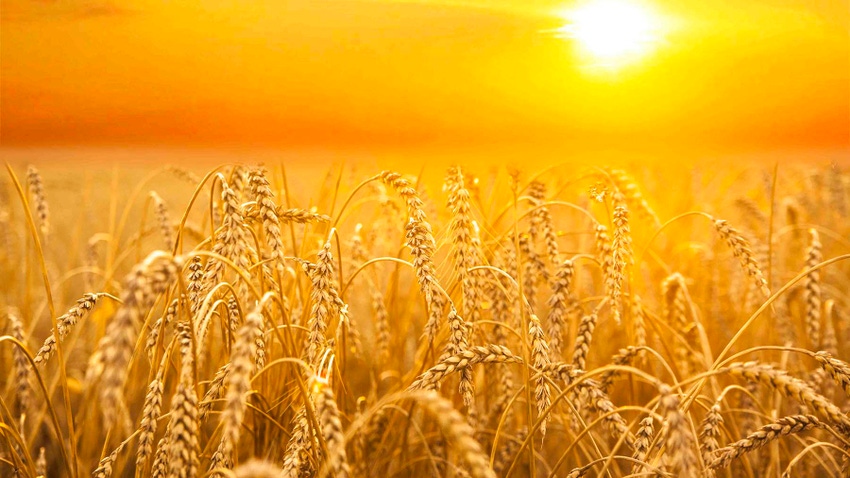
“If you want world peace, wheat prices have to be low.” I about fell out of the pew when my parent’s pastor said this during a sermon last summer.
It’s not that I disagree with the concept. I was a bit surprised to hear about it Sunday morning at church. High wheat prices were still making the national news in the aftermath of Russia invading Ukraine. This was also a few weeks before the United Nations and Turkey brokered the Black Sea Grain Initiative between Russia and Ukraine on July 22, 2022, to ensure food supplies from the Black Sea.
Wheat prices have indeed cooled since then, with prices now lower than before the Russian invasion. It seems that the world is back to the notion that global supplies of wheat are plentiful, despite the potential delivery hiccups that still swirl throughout the Black Sea region.
Global production
Global wheat production seems to be viewed as “good enough” although global production is not record, nor perfect.
The most recent USDA report pegged United States all wheat production at 1.739 billion bushels, about 70 million bushels higher than trade expectations and nearly 90 million bushels higher than a year ago. An increase in overall production with winter wheat was a large portion of the gain, with production pegged at 1.21 billion compared to 1.136 billion bushels in June.
However, dryness in Argentina, Canada and Europe was also noted by USDA. Canadian wheat production fell by 2 mmt to 35 mmt and Argentine wheat production also fell by 2 mmt to17.5 mmt. European Union wheat production was lowered by 2.5 mmt to 138 mmt. There were no changes to production in China, still large at 140 mt, nor were there changes to Indian wheat production, also large at 113.50 mt.
Global ending stocks
Yet, world ending stocks of wheat fell by 4.2 mmt to 266.5 mmt for the 2023/24 crop year. Last year global wheat ending stocks were pegged at 269.31 mt, which was down from the year prior at 272.6 mt. Even though ending stocks of global wheat are trending lower, the world is not likely at risk of running out of wheat, especially since wheat can be grown year-round in both hemispheres of the world.
A sideways lull for prices?
Without a fresh news headline, wheat prices may be back into a lull of quiet trade. Yet, looking ahead, the Black Sea Grain Initiative is again in jeopardy, just days before its one-year anniversary, as both Russia and Ukraine expressed concerns on whether the agreement could be extended beyond July 18.
We’ve heard this song and dance before, and the deal somehow always manages to come together.
That is why with the deadline looming, the market is not responding for now, because trade expects the deal to come together at the last minute.
As always be ready for anything. Sometimes, when markets begin to trade in a lull, is precisely when something unexpected can occur.
Reach Naomi Blohm at 800-334-9779, on Twitter: @naomiblohm, and at [email protected].
Disclaimer: The data contained herein is believed to be drawn from reliable sources but cannot be guaranteed. Individuals acting on this information are responsible for their own actions. Commodity trading may not be suitable for all recipients of this report. Futures and options trading involve significant risk of loss and may not be suitable for everyone. Therefore, carefully consider whether such trading is suitable for you in light of your financial condition. Examples of seasonal price moves or extreme market conditions are not meant to imply that such moves or conditions are common occurrences or likely to occur. Futures prices have already factored in the seasonal aspects of supply and demand. No representation is being made that scenario planning, strategy or discipline will guarantee success or profits. Any decisions you may make to buy, sell or hold a futures or options position on such research are entirely your own and not in any way deemed to be endorsed by or attributed to Total Farm Marketing. Total Farm Marketing and TFM refer to Stewart-Peterson Group Inc., Stewart-Peterson Inc., and SP Risk Services LLC. Stewart-Peterson Group Inc. is registered with the Commodity Futures Trading Commission (CFTC) as an introducing broker and is a member of National Futures Association. SP Risk Services, LLC is an insurance agency and an equal opportunity provider. Stewart-Peterson Inc. is a publishing company. A customer may have relationships with all three companies. SP Risk Services LLC and Stewart-Peterson Inc. are wholly owned by Stewart-Peterson Group Inc. unless otherwise noted, services referenced are services of Stewart-Peterson Group Inc. Presented for solicitation.
The opinions of the author are not necessarily those of Farm Futures or Farm Progress.
About the Author(s)
You May Also Like






